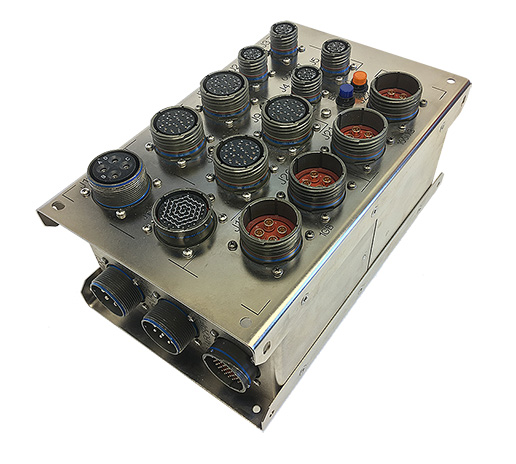
EXPERIMENTER INTERFACE PANEL
Experimenter Interface Panels (EIP) are a standard power and data interface for instruments flying on board many of the NASA Airborne Science platforms. The EIP supplies AC (3ϕ, 400Hz), DC (28V), and switched contacts controlling power to the payload instruments. The primary data interface is Ethernet but EIPs also offer connections for legacy protocols (RS-232, ARINC-429, IRIG-B, Synchro.) Each EIP incorporates a modified COTS Ethernet switch with four 1000BASE-T and eight 10/100BASE-T ports available to instruments. The switch also contains a thirteenth internal port dedicated to the EIP status monitor. In a typical installation, two 1000BASE-T ports are consumed by the aircraft NASDAT network backbone, leaving a total of ten ports available for payloads. The payload Ethernet ports use MIL-DTL-38999/III connectors with #8 AWG quadrax inserts, with four inserts per connector; two inserts are required for a 1000BASE-T connection. Quadrax is used on the EIP for performance and reliability reasons and can be used on instruments, however many users find the Amphenol military RJ45 (RJFTV) series is simpler and cheaper to install.
EIPs are installed on the ER-2, Global Hawk, and one WB-57 aircraft. Similar functionality is provided on the other network-enabled crewed NASA science aircraft, including the P-3B, DC-8, Sherpa, and two C-130s, using a more distributed system of equivalent connections.

































